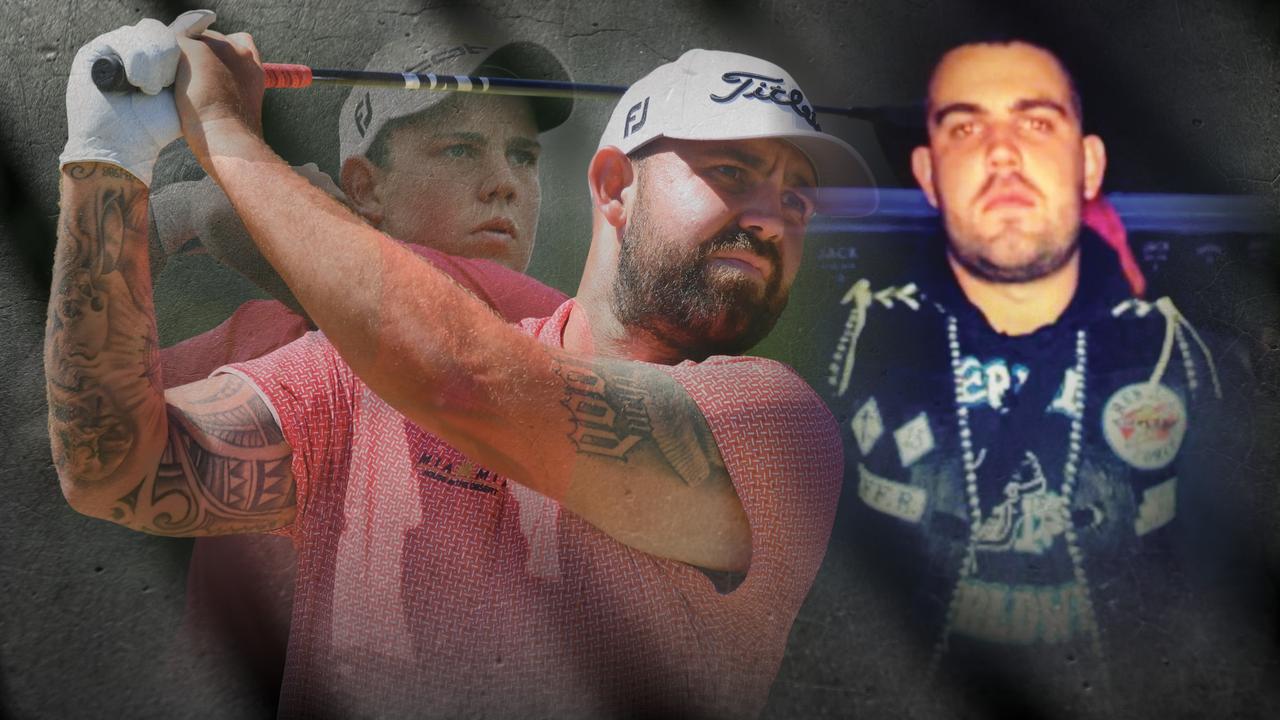Augusta through the eyes of the caddie who knows it best
Billy Foster returns to the house where he has spent five months of his life – in blocks of one week at a time. The life of a caddie.

Here in this house on Redwood Drive in Augusta Billy Foster has spent five months of his life. One week at a time. The life of the caddie. He returns to it today (Sunday) and will again remember Joyce, the lady who owned the house when he first stayed there in 1998. Joyce Culpepper, 79, a former nun and schoolteacher, died on September 6, 2010.
She bequeathed the house to her niece Colleen Boykin with the stipulation that it be freed up for one week in April every year. Then it would return to the men she called “the boys”. Ken Comboy, JP Fitzgerald, Cayce Kerr, Foster and other caddies have stayed at Joyce’s place for 23 years. She would move to the studio in the garden so that they could rent her place.
Walk from the house, turn right on to Washington Road, past the Methodist church and in 400 metres there it is on the left side. The National. Takes less than 10 minutes. One moment your senses are assaulted by an eight-lane road, then you cross to the other side and walk into the most loved golf course west of the Atlantic Ocean.
The first time Foster made it to Augusta was 1991. Five months before he had quit caddying. “I’d been a gypsy, on the road since I was 16,” he says. “Knocking on doors like Mary and Joseph, getting into pounds 2-a-night backstreet pensions in Barcelona and Madrid. Once I slept in a bush. Seven years of hardship. You couldn’t afford a flight, there were no mobile phones, no internet and it was two days by train to the next tournament.”
In his native Yorkshire, Ilkley Golf Club needed an assistant pro. He applied. They said yes. He said thank you. That should have been it. Then Seve Ballesteros got in touch. Before he had got to the car park at Ilkley GC, Foster had reversed back into caddie-dom. And there he was at the 1991 Masters, wide-eyed and innocent. That wouldn’t last.
“You leave Washington Road, go through the gates to Augusta National and you’re like Alice in Wonderland,” Foster says. “Inside, you could be in a different country, never mind a different state. It was the Saturday of the week prior to the ‘91 Masters, Seve played on his own, 50 chips, 100 putts, every hole. Seven hours on the course. Every day until the tournament started. I was knackered.”
Life with Ballesteros would be the best and most difficult of times. A moment on the 9th hole from their first round in 1991 foretold the rest.
“The most amazing thing happened. Seve hit the fairway.
“’Billee, pitching wedge, eh?’
“’No, Seve,’ I said. ‘It’s 144 with six yards uphill and it’s into the wind from the right. It’s a nine-iron.’
” ‘OK, Billee, very good, you the best caddie I ever had.’
“The pin’s front left, triple tier green, and he’s hit the nine-iron beautifully, it’s knocking out the flagstick. I’m expecting the crowd to go bananas and there’s not one clap. ‘Billee, you see the ball?’ ‘Looked good to me, Seve,’ I say. We’re way below the level of the green, can’t see a thing. He starts running uphill, gets to where his eyes are level with the green. His ball is off the back edge.
“Now he’s got an 80-foot downhill putt with 15 feet of break. Like trying to putt the ball down a marble staircase. I’m coming up the hill, ‘Billee, Billee,’ he’s shouting, ‘You son of my bitch.’ He gives me the horrible, cold stare that goes through you, like he wanted to rip the putter out of the bag and chop my head off. He gives me a bollocking.”
Ballesteros surveyed the putt. Imagine this brutally downhill putt starts from the north and the hole is 80 feet distant, tucked away in the southwest corner. If the putt were played in a straight line to the hole it would probably end up 40 or 50 yards below the front of the green. Ballesteros opts to play it directly west, on to the fringe at the back left of the green.
Foster is terrified. “After he’s hit the putt sideways, it stops in the fringe. Now he’s 85 feet away in three. I look at the clubhouse and think I might start running. Then I see the dimples on the ball slowly edge back on to the green, so slow I can read the manufacturer’s name on the ball, T-i-t. Anyway, it works its way back on to the green and starts trickling down these staircases, first one, then another, breaking right all the way.
“Eventually, it stops four inches from the hole. Unbelievable imagination. He comes towards me, the scowl has gone from his face. In its place the most radiant smile the game has ever seen. This beautiful man, he puts his arm around me. ‘Billee, Billee,’ he says, ‘not your fault. It is my fault for listening to you.’”
The partnership ended at the 1995 Masters after a volcano on Mount Foster. Seve had been struggling with his game, so he blamed his caddie. Until the caddie could take no more. “He got me that much in a straitjacket, my head was gone,” Foster says. “I was shaking uncontrollably with anger. ‘Billee, what is your problem?’ ‘We need to have a chat.’
“We walked to a quiet place and that’s when all the poison came out. All the whip marks I carried led to this crazy situation where I’m abusing him, calling him every name under the sun from a pig to a dog. I fought fire with fire. I overstepped the mark and that was ultimately my demise.
“After that, we got on great. Six weeks later he wanted me to come back but by then I’d linked up with Darren Clarke and had moved on.”
After Clarke, he worked with Thomas Bjorn, then for a short time with Sergio Garcia and a very long time with Lee Westwood. He would help them to win lots of tournaments but none of his men got the Green Jacket. There were times, especially with Westwood, when it was close. Phil Mickelson’s win in the 2010 Masters remains a grim memory.
“Sunday afternoon on 8, 9, 10, 11 and 13 Mickelson was deep in the trees. Anybody else would have played those holes two or three over. Mickelson played them two under. Lee played incredible golf and couldn’t get the putts to drop. Finishes second. Same thing in 2012 when Bubba Watson beat Louis Oosthuizen in a playoff. Lee plays the best golf, can’t hole a putt and finishes one off the lead.”
After 10 years Westwood and he parted, in 2018. The player wanted to make his own decisions on the course, and his caddie couldn’t simply be a bag-carrier. All good things and all that. He was 54 then and still wanted one more spin on this roundabout.
Matt Fitzpatrick offered him the job. There was a lot about his fellow Yorkshireman that he liked. Not least his character. “I call him Bernhard Langer’s love child because he’s very respectful, very grounded, a little gentleman,” Foster says. “His work ethic is by far the best I’ve ever seen. And his manners are impeccable.”
Good manners are important? “When our kids, Joe and Ella, were four, I sat them down and said, ‘I don’t care if you’re a bus conductor or you’re a toilet cleaner, all I demand is that you have manners. You say please and thank you to everybody.’ Even though I’m their dad, I think I can say they’re lovely kids.”
On the week that Foster first carried Fitzpatrick’s bag, the player was ranked 43rd in the world. Now, two and a half years on, he’s up to No 16. This season he has been in particularly good form. “Matt’s the kind of player who can finish top 10 even when not at his best.”
At the house on Redwood Drive this year he has got Rory McIlroy’s new coach, Pete Cowan, and Brooks Koepka’s caddie, Ricky Elliott, for company. Foster will do a lot of the cooking. Shepherd’s pie, for sure. That’s what he used to cook for Joyce when she came up from the studio in the garden to join them for supper.
She was in her seventies then and a woman who had never had much of a taste for alcohol. They coaxed her along and one glass of red wine became two. At the end of the evening, Foster would give whatever food was left to Joyce and tell her it would taste even better the next evening.
Before departing, Foster always wrote goodbye on the chalkboard in the kitchen. “Thank you Joyce. Love from the boys xx.” Before she died in 2010, Joyce asked her niece to leave the message as they had written it, so that when the boys returned they would know that she had kept it in her kitchen all that time.
The Sunday Times


